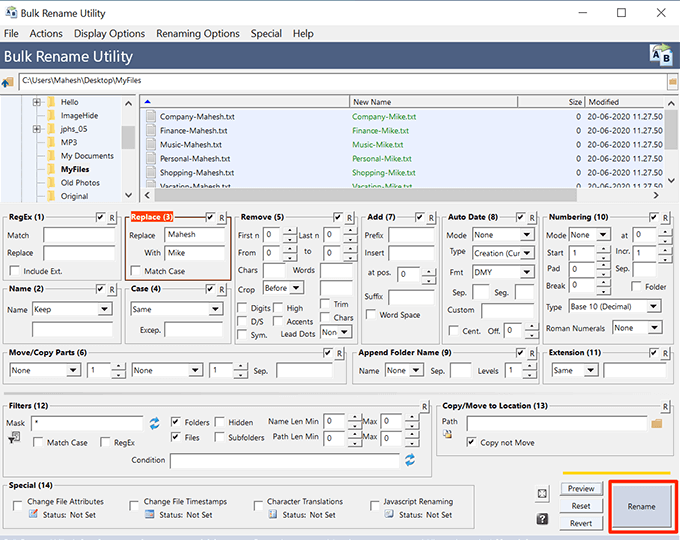


For example, the rename-item commandlet also offers features like a -recurse switch that can apply the commandlet to files in a folder and all folders nested inside that folder, a -force switch that can force renaming for files that are locked or otherwise unavailable, and even a -whatif switch that describes what would happen if the commandlet was executed (without actually executing it).Īnd, of course, you can also build more complicated commandlet structures that even include IF/THEN logic.
#Windows mass rename with number how to#
RELATED: Geek School: Learn How to Automate Windows with PowerShellĪs you might expect, PowerShell offers tremendous power when it comes to naming your files and we’re only scratching the surface here. The rest of the commandlet just signifies that any space ( " " ) should be replaced by an underscore ( "_" ). The -replace switch indicates that a replacement is going to happen. The $_.name part stands in for each of the files getting piped. The dir part of that commandlet lists all the files in the folder and pipes them (that’s the | symbol) to the rename-item commandlet. Pipe the output of Dir to Rename-Item and you’re in business.ĭir | rename-item -NewName The two important commands you’ll need are Dir, which lists the files in the current directory, and Rename-Item, which renames an item (a file, in this case).

Turn on the switch for Enable PowerRename if its off. Using PowerShell, you can pipe the output of one command-known as a “commandlet” in PowerShell terms-to another command, just like you can on Linux and other UNIX-like systems. 1.Open the PowerToys Settings window by double-clicking its System Tray icon. PowerShell offers even more flexibility for renaming files in a command-line environment. If you’re interested, the folks over at the Lagmonster forums have an excellent writeup on the subject. RELATED: How to Write a Batch Script on WindowsĪnd this only begins to address the kinds of command line wizardy you can get into if you want to build more complicated commands-or even batch scripts-by weaving other commands and conditionals into things. html extension to use the same file name and same first three letters only of the file extension, which ends up cutting the “l” off of all the extensions in the folder. You can use the ren command to rename multiple files simultaneously. This tells Windows to rename all files with the. Batch Rename with Command Prompt The Windows Command Prompt offers a bit more flexibility for batch file renaming.


 0 kommentar(er)
0 kommentar(er)
